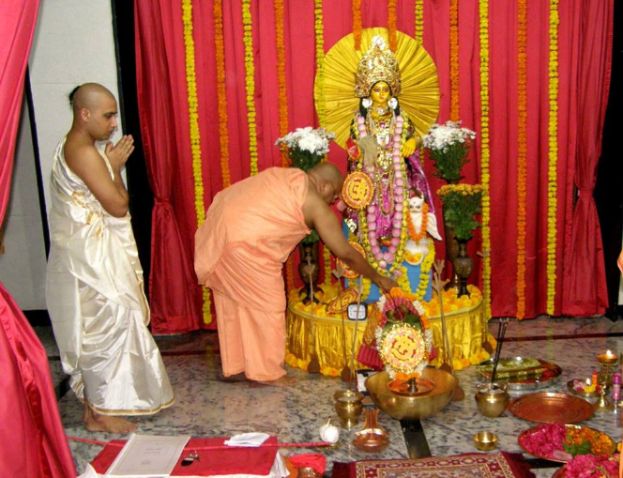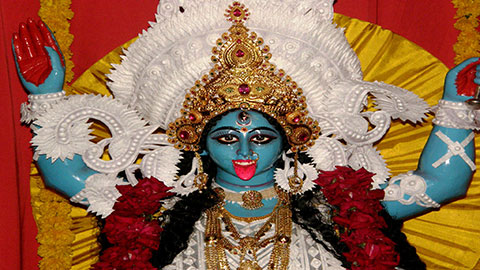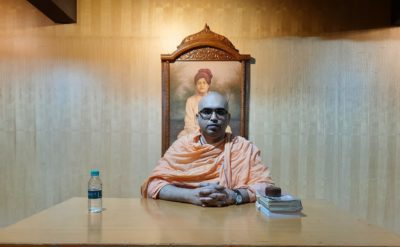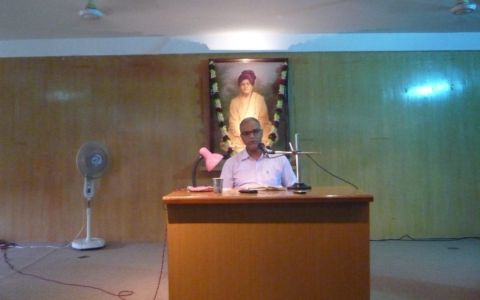Aratrikam
Aratrikam/ A daily vesper service to Sri Sri Ramakrishna, it was wrote & sung by Swami Vivekananda himself
खण्डन_भव_बन्धन जग_वन्दन वन्दि तोमाय ।
निरञ्जन नररूपधर निर्गुण गुणमय ॥१॥
Khannddana-Bhava-Bandhana Jaga-Vandana Vandi Tomaaya |
Niran.jana Nara-Ruupa-Dhara Nirgunna Gunnamaya ||1||
O Ramakrishna, You break the bondage of the Samsara (delusion of Worldly Existence), and You are revered by the whole World; I worship You,….

Spiritual Initiation
Initiation in the Ramakrishna Mission is not a “membership” or a “rite of passage” to any group or cult.
Initiation means letting go of the superficiality of our aspirations, and choosing freely and with clear thinking, a path of sincere “sadhana” or spiritual struggle with the aim of realizing the eternal truths spoken about in our scriptures.
Those who wish to undertake such a path, have the privilege and opportunity of being initiated by those who have been vested with the necessary spiritual authority.
“The flow of Divine Power and Grace in the Ramakrishna Math & Mission is maintained by an unbroken lineage of Gurus, the guru-parampara. The President of the Ramakrishna Math & Mission, worldwide maintains this spiritual tradition through the process of mantra-diksha or Initiation. ”


Vedic Chanting
Do you like to learn Chanting Properly!
Regular chanting of the ancient vedas are a norm at the Ramakrishna Math. People of Mumbai are indeed fortunate to be able to participate in these sessions.
Vedic chanting and Gita chanting in the Ramakrishna Math, Mumbai is a serious affair with emphasis on intonation, correct pronunciation, meaning of these hymns.
Led by Swami Shrimohanananda, a group of devotees chant hymns from the Vedas at the celebrations in the Mumbai Math. They also chant these vedic hymns for all major celebrations of the Ramakrishna Math & Missions across the country.
SEEK SPIRITUAL
Guidance
The senior monks at the Mumbai Center are always ready to solve doubts and perplexities which beset the paths of sincere spiritual aspirants.
You can also seek their guidance and instruction for solving problems in your day – to – day spiritual life.






